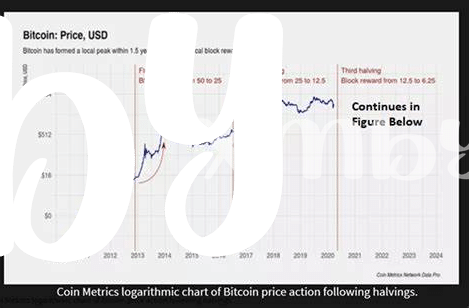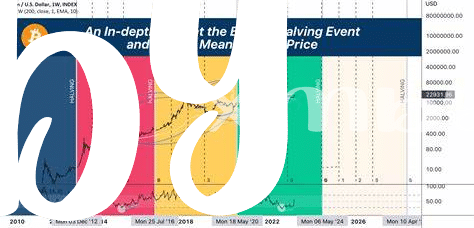🌍 Exploring Bitcoin’s Global Regulation Adventure

Imagine setting off on an adventure across various lands, each with its own rules and customs. That’s pretty much what Bitcoin is doing in its journey through the world’s regulatory environments. In some places, Bitcoin is welcomed with open arms, seen as a revolutionary way to think about money and investment. Picture it like a green light in a busy intersection, where everything flows smoothly. In others, it faces a bit of a tougher crowd, encountering red lights in the form of strict rules that try to fit this digital newcomer into traditional financial boxes. It’s a bit like a game, where each country has its own set of challenges and levels of acceptance, ranging from enthusiastic embrace to cautious curiosity. Investors and enthusiasts watch closely, eager to see how Bitcoin tackles these diverse landscapes. It’s not just about making it through; it’s about understanding the unique tapestry of global views and finding ways to thrive.
| Country | Regulatory Stance | Impact on Bitcoin |
|---|---|---|
| USA | Moderate | Strategic adjustments for growth |
| Japan | Friendly | Rapid adoption and innovation |
| China | Restrictive | Limited activity but high interest |
⚖️ the Us Vs the World: Regulation Showdown
In the grand tapestry of Bitcoin’s journey, the US and other countries are painting very different pictures. The US approaches Bitcoin with cautious steps, crafting rules that sometimes feel like navigating a tightrope. Across the oceans, some nations extend a welcoming hand to Bitcoin, seeing it as a path to innovation and financial inclusion. This regulatory tussle isn’t just a matter of policy but of vision—where does Bitcoin fit in the future’s financial landscape? For investors and enthusiasts, understanding these contrasts is key. The differences aren’t just academic; they influence Bitcoin’s usability and acceptance worldwide. As the discussion unfolds, we find ourselves at a crossroads where each decision and regulation could tip the scales. For a deeper dive into how these regulatory environments affect Bitcoin, especially considering its volatility, a helpful resource can be found here. This intricate dance of regulations is more than just a legal battle; it’s about shaping the future of money itself.
🚦 Red Lights and Green Lights: Legal Implications

Navigating through the world of Bitcoin, it’s like driving on a highway where each country has its own set of traffic lights. Some places shine green lights, welcoming Bitcoin with open arms, crafting rules that protect users while fostering innovation. They view Bitcoin as a revolutionary financial tool, a new way to think about money. Here, individuals and businesses tread more confidently, knowing what’s allowed and what’s not.
But then, there are red lights, where the rules are strict, or sometimes, there’s a complete stop on anything Bitcoin-related. These places worry about the risks – from potential fraud to how it might upset their own financial systems. For anyone looking to invest or build with Bitcoin, these red zones are tricky. It’s like needing a detailed map to avoid getting lost or, worse, fined. Understanding these legal landscapes is essential, as it shapes not just where and how you can use Bitcoin, but also the future path it might take.
💼 Impact on Investors: Navigating the Regulatory Maze

For those putting their money into the digital coin, understanding the rules of the game has become just as crucial as picking the right investment. Think of it as a treasure hunt, where the map keeps changing. Across the globe, governments are drawing lines in the sand, deciding what’s allowed and what’s off-limits when it comes to Bitcoin. This changing landscape means investors need to be on their toes, adapting their strategies to stay ahead. It’s not just about picking the winning horse anymore; it’s about knowing the track’s rules inside out. In some places, you might find open doors welcoming Bitcoin with open arms, offering tax incentives and legal clarity. Meanwhile, other regions seem to be installing roadblocks faster than you can say “blockchain,” with strict regulations and hefty paperwork. For the savvy investor, though, these challenges aren’t roadblocks; they’re opportunities to navigate the maze more cleverly. Staying informed is key, and resources like bitcoin mining process in 2024 can provide the compass needed to traverse this evolving landscape. As with any adventure, the rewards come to those ready to adapt, learn, and understand the terrain they’re venturing into.
🔍 Decoding Governmental Signals: What’s Next for Bitcoin
Governments worldwide are like big ships trying to navigate the choppy waters of Bitcoin’s presence in our financial seas. 🌐 Some are sending out friendly waves, hinting they might welcome Bitcoin with open arms, seeing it as an innovative addition to their economies. Others, however, are flashing caution lights, worried about what this digital currency means for their financial control and security. This game of signals is crucial for anyone trying to understand what could happen next with Bitcoin. It’s like trying to decipher a code where every government’s announcement or policy change can hint at broader shifts to come.
What makes this especially tricky is that these signals can be pretty mixed. 🔄 For instance, a country might talk tough on the need for Bitcoin regulation one day, hinting at strict rules, then follow up with actions that suggest a softer approach. This back-and-forth creates a puzzling environment for Bitcoin enthusiasts and investors trying to figure out their next move. The key to decoding these governmental signals lies in staying informed and understanding that the landscape is constantly shifting. Below is a table highlighting different countries’ stances on Bitcoin that might give us a sneak peek into the future.
| Country | Stance on Bitcoin | Recent Actions/Signals |
|---|---|---|
| USA | Mixed/Regulatory focus | Discussions on stricter regulations for cryptocurrencies |
| Japan | Welcoming | Continued support for cryptocurrency use and innovation |
| China | Restrictive | Ban on cryptocurrency transactions and mining |
| EU | Regulatory cautious | Moves towards a unified regulatory framework for cryptocurrencies |
These varying approaches across the globe highlight the diverse paths governments might take, affecting Bitcoin’s journey ahead.
🚀 Bitcoin’s Future: Thriving or Surviving Regulation

Looking ahead, the landscape of Bitcoin’s interaction with global regulations feels like a thrilling tale right out of an adventure book. Picture it: we’re on a journey, witnessing Bitcoin dance its way through a maze of policies, with governments trying to play catch-up. This dance, while complex, is crucial for everyone involved. As countries around the world sharpen their pencils to draft clearer rules, Bitcoin’s path is dotted with both daunting challenges and bright opportunities. For enthusiasts and casual observers alike, keeping an eye on bitcoin security practices in 2024 could offer valuable insights into Bitcoin’s price swings and how the community is working to stabilize its journey amidst these waves.
In this unfolding narrative, there’s an exciting undercurrent of resilience. Bitcoin, by its nature, is built to weather storms. While regulations might appear as hurdles, they also serve as stepping stones for Bitcoin to solidify its place in the financial ecosystem. The evolution of regulations is not just a test but an opportunity for Bitcoin to demonstrate its adaptability and strength. As we stand at this crossroad, pondering whether Bitcoin will thrive or just survive, it’s clear that its future hinges on how well it navigates these regulatory waves. The community’s efforts towards enhancing security practices and engaging with regulators can turn what seems like an obstacle course into a launchpad for Bitcoin’s next leap forward.
